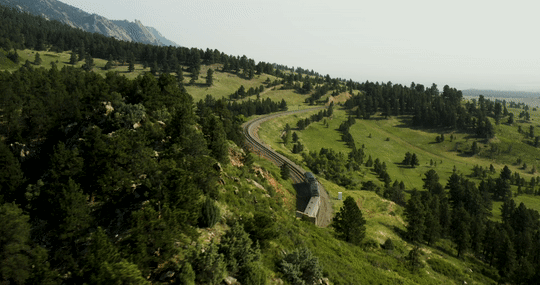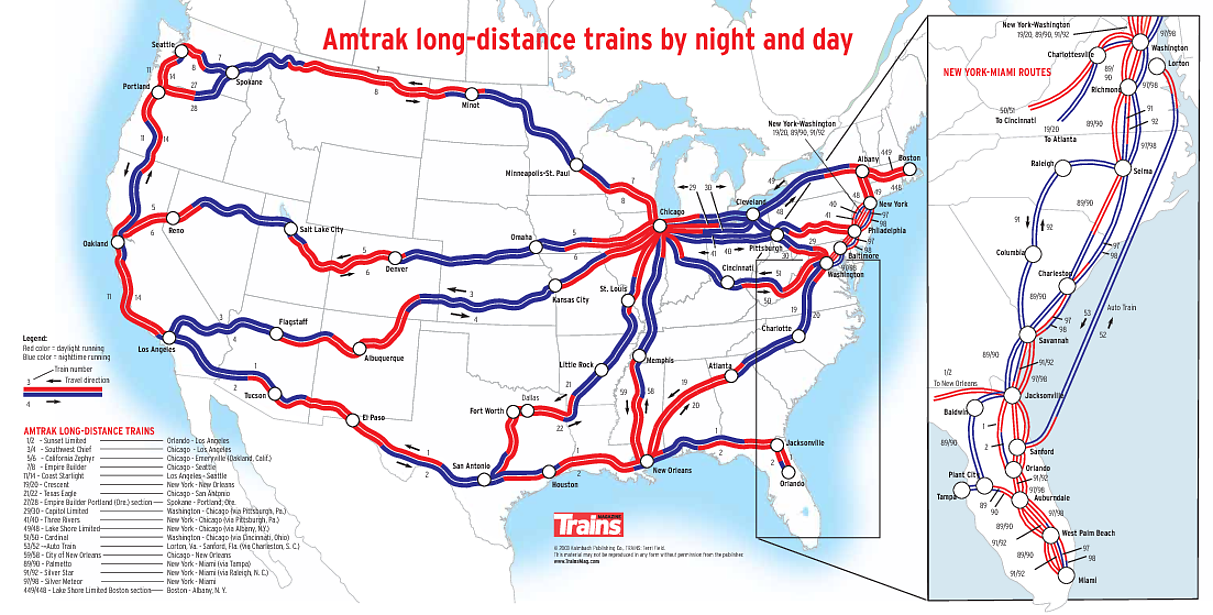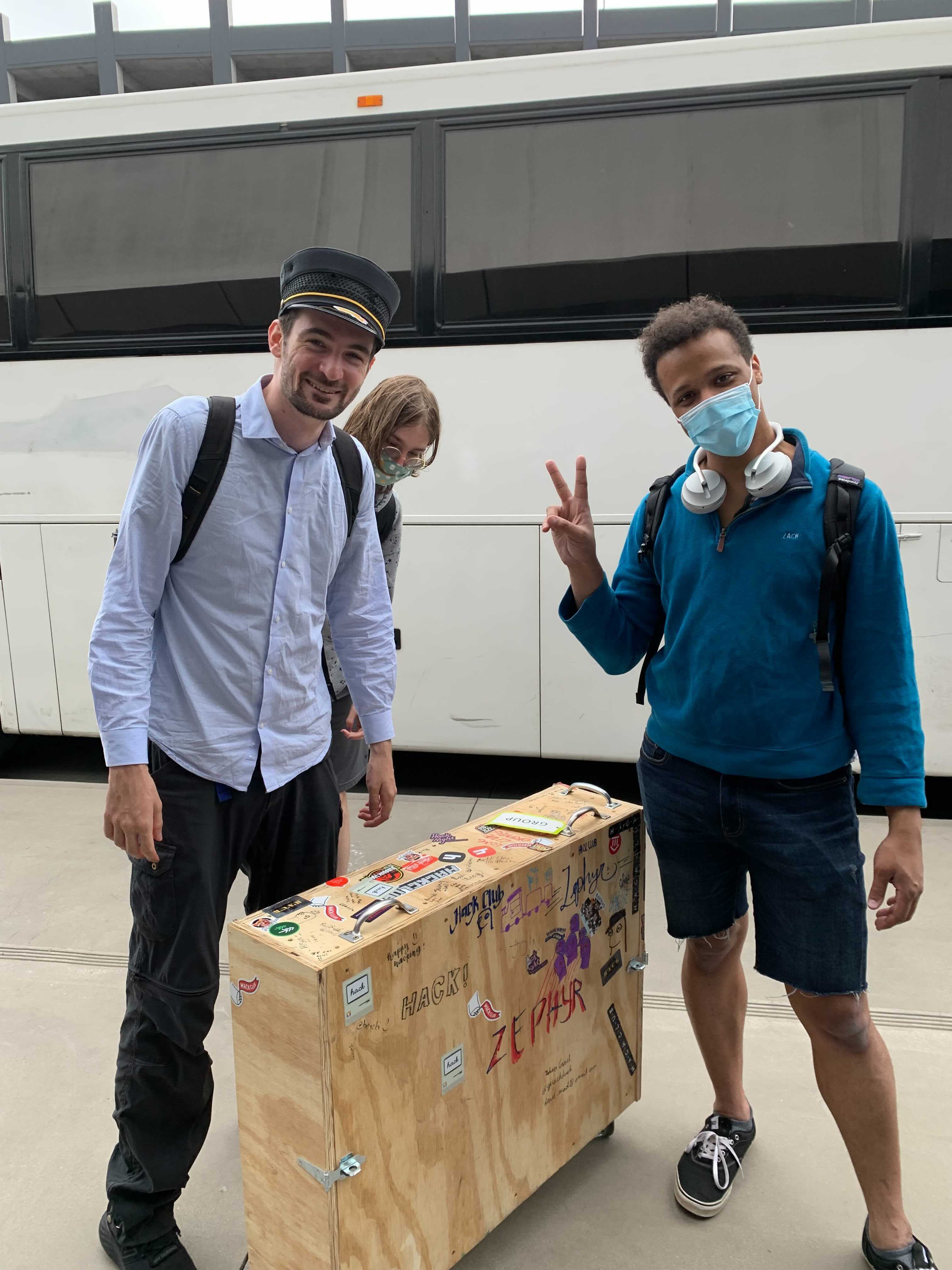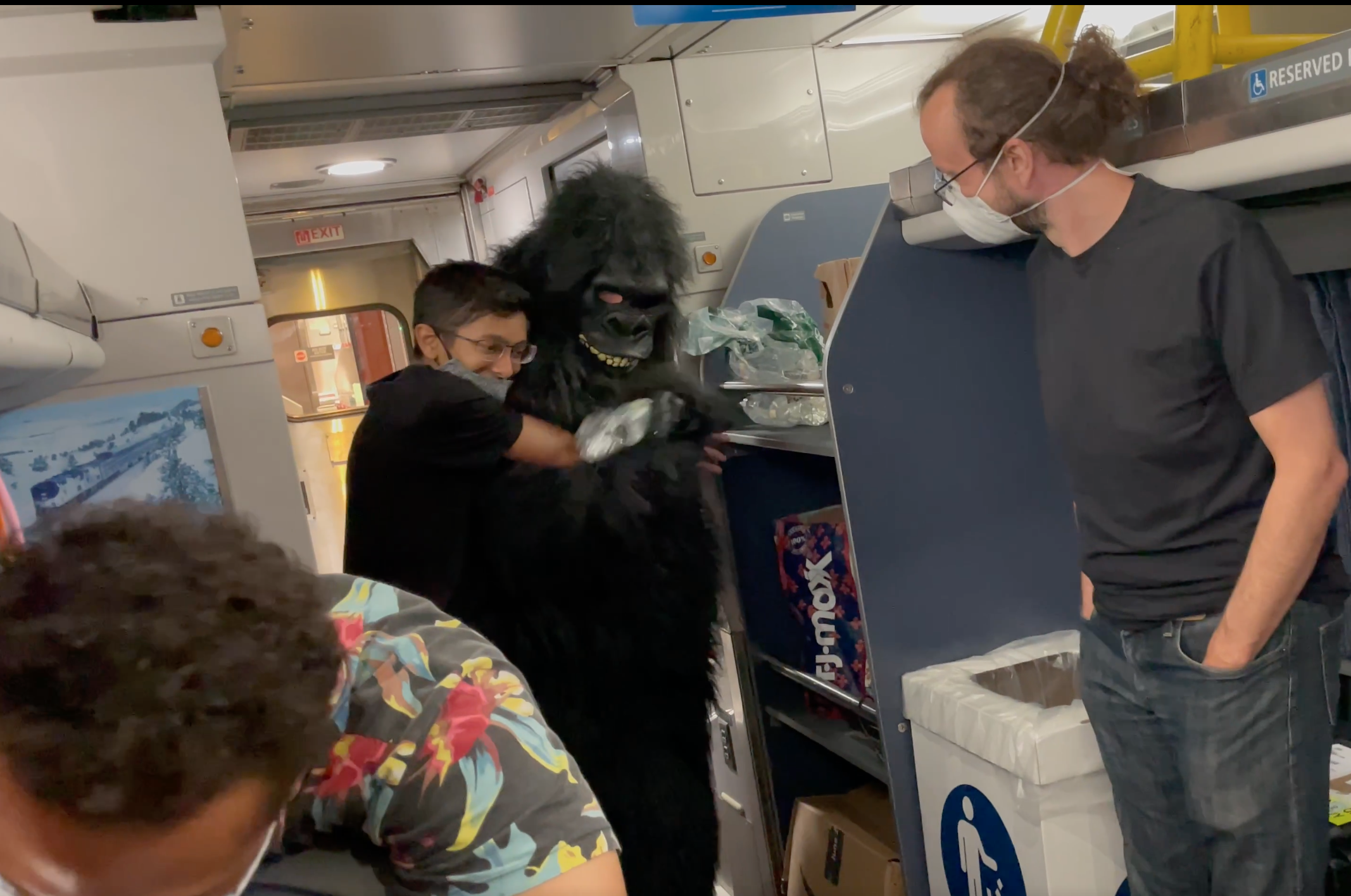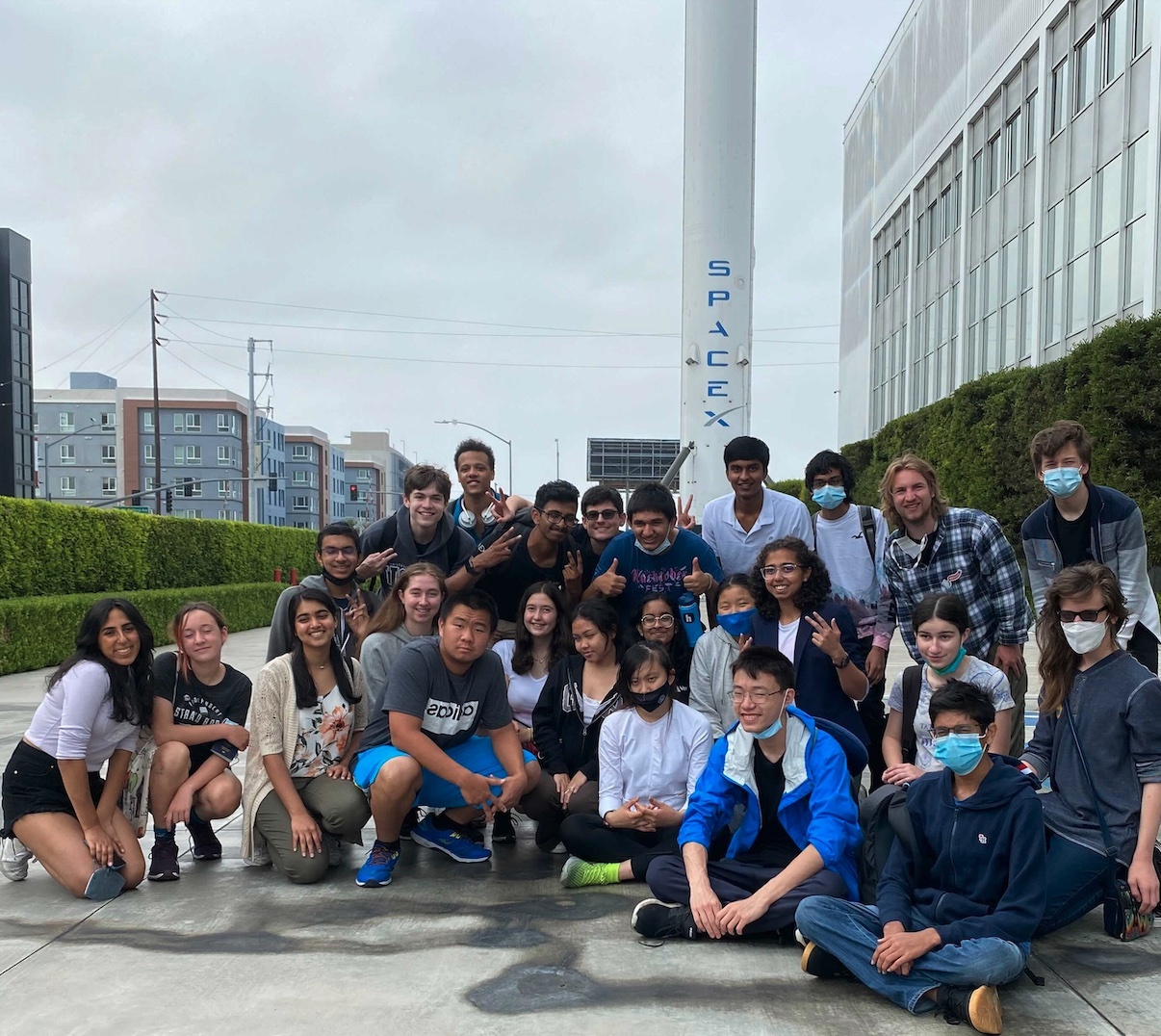🚂 The Hacker Zephyr
Every summer, Hack Clubbers do something special.
In 2019, 75 Hack Club leaders gathered in San Francisco for Flagship.
In 2020, 300 Hack Clubbers received $50,000 for hardware projects. We launched Scrapbook and hosted the Summer of Making.
In 2021, we chartered a train, The Hacker Zephyr, across America, and hosted the world's longest hackathon on land (3,502 miles).
The Hacker Zephyr passing through Rocky Flats, Colorado with 42 Hack Clubbers on board.
As a transparent and open-source 501(c)(3) nonprofit, Hack Club decided to make every detail and product of the Zephyr publicly available in this repo. Besides a brief narrative of The Hacker Zephyr journey, from how we first came up with the idea to our last stop in LA at SpaceX, here you can access all of our planning documents, financial records, and most importantly, a read-only copy of the ZephyrNET, our homemade mobile server which houses all of the projects Hack Clubbers completed while cruising across the USA.
We work so hard to create extraordinary experiences like The Hacker Zephyr because we believe coding together can become a sacred act. It's hard to overestimate how much collaborative, creative energy is unleashed by a single good hackathon. That was certainly the case this July onboard the Zephyr, and we hope that it will serve as an inspiration for equally memorable hackathons in the future.
This is the story of how we did it.
Securing the Train
It turns out chartering a train across America is actually quite a difficult thing to do. During the heyday of America's rail network in the 1940s, you could take a train almost anywhere, but today more than half the routes are closed and there's only one company still operating passenger service: Amtrak.

America's passenger rail network in the 1940's vs. today.
We spent the first three weeks of planning purely focused on one question: is it even possible, logistically, to get 42 Hack Clubbers on a train across the country (during a global pandemic, at that)?
After looking at Amtrak's availability, talking with others who have done similar trips, and spending hours on the phone with train enthusiasts, we were able to narrow down the possibilities to three options:
- Book everyone only in Amtrak cars
- Source private cars from around the country and do a private charter
- Do some sort of combination of the two
The clear benefit of choosing Amtrak was the price and ease of booking. However, the downsides were considerable: attendees would have to wear masks, we would be sharing car space with other Amtrak passengers, and there could be many transfers. Additionally, all food would need to be prepackaged and we couldn't serve our own meals.
Thus the major upside of the full charter was that we'd be controlling our own space, serve meals onboard, not have masks, get a bed for everybody, and other perks that made this option 1000x better. But, of course, private charters are much more expensive & harder to find. In the past 2-3 years, a recent Amtrak policy change made it much more difficult and expensive for private charters to operate. Many of the private charter owners we talked to had gone out of business over the past year or so because of that change.
Ultimately, we decided to go with the best of both worlds, Option 3. We'd take a bus from Hack Club HQ in Burlington, Vermont to New York City, then Amtrak to Chicago, and then we'd board 3 private cars for the longest segment of the trip: from Chicago to Denver then San Francisco (55 hours). Our main private car ended up being a Super Dome, one of the last remaining of an initial 10 in the US. Finally, we'd take Amtrak for the last and shortest leg of the trip, from SF to LA, where we'd end at SpaceX and Venice Beach.
After 40+ meetings with different groups in the train industry, train enthusiasts, and Amtrak itself (including a failed attempt to meet with Amtrak's CEO), we finally found AAPRCO, the American Association of Private Railroad Car Owners, and through them a guy named Steve Sandberg. It turns out that over the past 50 years, as railroads went out of business and sold off their assets, private individuals would go to the liquidation office and buy up full railcars from the 40's and 50's at incredibly low prices. Steve is the largest private railcar owner in the country that we know of, with a fleet of 14 cars and 2 locomotives. His cars were apparently also used for George Bush Sr.'s 1992 presidential campaign train. They weren't quite enough to win reelection for him, but they worked perfectly for our needs.
We met with Steve, who was initially apprehensive because he'd need to source a car from another part of the country to fit all of us. But in the end he agreed—and just like that, The Hacker Zephyr became a reality.
We settled on a combination of 2 Pullman sleeper cars and the Superdome. These were attached, like a big hacker caboose, to the end of one of Amtrak's cross-country overnight trains. Steve was onboard the whole way with his crew to make sure everything went smoothly.
While we worked with Steve to bring as many Hack Clubbers along with us as we could, we ran into a physical constraint at Denver's Union Station. Even with just 3 extra cars, the train was so long we blocked traffic at any of the stops we made. Oops.
The Launch & Applications
Launching The Hacker Zephyr began with this cryptic video that we tweeted on the 24th of May. We'd follow this tweet up with a collection of more cryptic tweets. Tom Preston-Werner even created a few of his own!
The goal of all this hint-dropping was to build up excitement for a mysterious community meeting we'd be hosting on the Saturday the 29th of May. We announced this on Wednesday the 26th of May. Accompanying the announcement was a ticketing system. Hack Clubbers could react to the Slack announcement with the
Building excitement for the meeting was one thing; but we also needed to pull off a great meeting that would do something with that excitement. We planned to start with some old videos of trains with "American" music, then transition to a short introductory statement, followed by our main trailer video. Zach and Tom then both talked about the trip and its goals. Once they were finished, we opened the floor for questions from Hack Clubbers. You can watch the full call here.
Now that the secret was out, we launched our website (code) with all the information, a parent's guide to the Zephyr and a registration of interest form. Being constrained by the limited capacity of the train, we had to select a smaller participant group out of everyone who registered interest. During that process we would ask ourselves different questions each day, such as: "who are some awesome new club leaders who will get a ton out of this?" and "who are some people who have been deep into Hack Club for a long time and will not only get a lot out of this, but also give a lot to other people on board?".
Those invited were called to receive the news and would then receive an email and a more detailed guide. This made the process feel really personal. They'd have seven days for both them and their parents to sign a Memorandum of Understanding to confirm their participation.
Following this, we'd invite them to a private channel, coordinate with them on travel arrangements, have them or their parents sign a liability release and for those under 18 have their parents sign the "Freedom Waiver". After all this, and some thoughtful packing, they were ready to enter the Hackerland in Vermont.
ZephyrNET & the Hackathon
Large parts of the train route across the country would be without wifi or cellular access. Amtrak provides WiFi, but their WiFi is generally not connected to the internet except when passing through towns, not to mention having a reputation for being slow and unreliable, kind of like, well...the rest of Amtrak.
The solution we came up with was lugging a 116 lbs server around with us (60lbs server + 56lbs hand-made wood enclosure) along with networking equipment we could setup on Amtrak coaches as well as on our private cars, called the ZephyrNET. A full write-up on the hardware and software behind this is available in zephyrnet/.
The architects of ZephyrNET, Max Wofford (left) and Zach Fogg (right), pose with their creation.
We looked at our favorite hackathons (each wonderful in their own way) and tried to pull a bit from each when coming up with the focus of our event. The Zephyr would be an anti-hackathon. It would be goofy and open-ended yet rigorous, like the best hackathons of old. Except this time on a train.
The hackathon's theme was to build a time capsule. Too many hackathons are forgotten the day after the event ends because their website goes down and their projects don't work (and usually didn't work by the end of it anyways). Everything on the ZephyrNET would be open-sourced, and everyone would contribute to a public scrapbook, forked from our community scrapbook to work offline. There would be no prizes or judging. The goal was to reach 500 unique contributions to the time capsule or else it would delete the folders of members that opted-in. This was a slightly chiller version of the original idea to rm -rf the whole server if we didn't finish in time, but kept much of the same pressure.
Three notable search engine projects:
The Trip
Coding is one of the most surreal activities a human can do. In a matter of hours you can take something from not existing to existing. Once you do that you can start to understand how the whole internet, even the whole universe, comes to arise. Hack Club believes that coding is fundamentally a creative activity. To do inspired, creative work it helps a lot to have inspired experiences and be in inspiring settings.
We wanted The Hacker Zephyr to feel like something totally unexpected could happen at any moment. We wanted it to be a place outside of the 'default world', particularly for high schoolers who are stuck with classrooms and college admissions always at the back (or forefront) of their minds.
So, naturally, we called up every weirdo, artistic, out-of-the-box thinker that we knew. Our first call was to Woody Keppel, an incredible actor and performer, and professional clown. Woody brought in Jeremy Holm (IMDB), who would later storm down the isles of an Amtrak coach in an ape suit with Woody in hot pursuit, as a zookeeper, among other things.
Woody was the mastermind behind making the experience what it was, which could only be described as something akin to a wholesome David Lynch movie. During our first night together, he arranged for a secret marching band to suddenly emerge from the Vermont woods where we were gathered — surprising, to say the least. As we chugged through Colorado, with a view of the sun setting behind the Rockies, Woody transformed the Super Dome into the "Hacker Lounge", with a full non-alcoholic cocktail menu and black tie service. He brought a band onboard, including one member known only as "Saw", who - besides performing with the band on violin - played an ethereal-sounding handsaw solo using his violin bow between songs. On our last night, Woody tended to a bonfire on the beach in Los Angeles and sung the song he composed about The Hacker Zephyr with everyone, called 42 Riders.
Over the course of the journey we were also visited by Jerry from Ben & Jerry's; the Libermans (political exiles from Russia and previous Heads of Product at Snapchat); Tom Preston-Werner (GitHub, SemVer, Toml, RedwoodJS), who joined & hacked with us for nearly the entire Chicago to San Francisco portion of the trip; Zeb Scoville (NASA flight director); and Cliff Stoll (mad scientist).
All of these colorful characters, interacting with a few dozen excited teenage hackers, made for a uniquely electric atmosphere onboard and a lot of unforgettable memories, not to mention some incredible projects!
At the end of the trip, we were graciously hosted by SpaceX HQ in Hawthorne, LA, where we were given a tour of the rocket factory. Afterwards we had our final hackathon project demoes, which ended up taking a lot longer than expected (we're very grateful to SpaceX for letting us take the time to get through all of them). We all took photos outside with the rockets after that, and then we went back to the hotel. There was a bonfire at the end of the night, and flights very early in the morning for everyone.
🗃 Planning Documents
Our planning docs are organized by topic into the following directories:
| File | Description |
|---|---|
| ./assets | Sketches, logos, videos, etc. that we used to market the Zephyr |
| ./logistics | Documentation on planning, scheduling, coordinating, and other details |
| ./notes | Assorted notes from staff |
| ./slack | Announcements posted in Slack |
| ./zephyrnet | Technical documentation / notes on the hardware & software that went into building the Zephyr's intranet |
💵 Finances
The finances for the Hacker Zephyr are open sourced here through Hack Club Bank's transparency mode.
💻 Associated Repositories
- The Zephyr Chronicles (Offline Scrapbook Port)
- All Aboard (zephyr.hackclub.com site)
- Ticket issuing service for announcement
- ZephyrNET Deployment Flow
- schedule.zephyr - event schedule
- photowall.zephyr - example dynamic ZephyrNET app
- garden.zephyr - example static ZephyrNET app
- start.zephyr - instructions for getting started on ZephyrNET
- captive portal for ZephyrNET (ultimately not used)
☀️ In Years Past
We've previously ran other summer projects:
| Year | Project | Description |
|---|---|---|
| 2021 | The Hacker Zephyr | This repo! |
| 2020 | Summer of Making | $50k in hardware donations to teen hackers around the world + the creation of Scrapbook (code) |
| 2019 | Flagship Summit | IRL meetup of high school hackathon organizers and coding club leaders (photos) |
| 2018 | Hack Club Bank | We built and launched the first version of Hack Club Bank (read the 1st and 2nd announcement) |
| 2016 | Hack Camp | Summer camp / further writing & testing workshops |
| 2015 | Hack Camp | Summer camp / testbed for Hack Club's first workshops (content)(code) |

